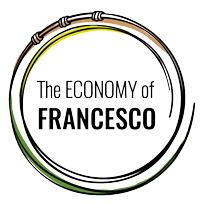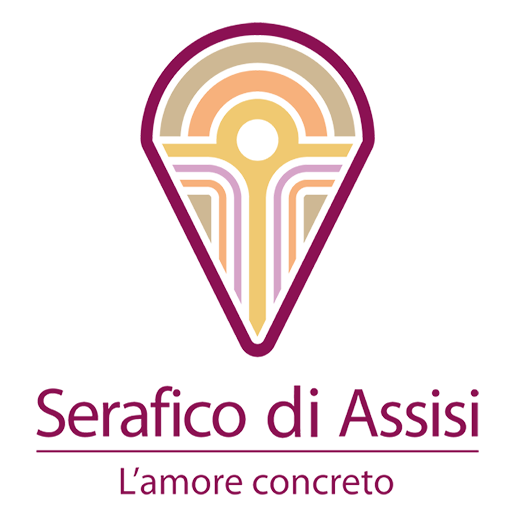An economy that is regenerative and inclusive “by design”, what does it mean?
Interview
Project manager at a number of IT startups (including blockchain), Ian Horughiy – from Ukraine – is now involved in a project for Olympic broadcasting systems. Previously he had experience with corporate finance, stock market screening and trading algorithms development.


A curious girl. A dreamer and a believer. Diana Salgado – from Portugal – loves to read and travel. She is an occupational therapist and works with children with disabilities.
Both are enrolled in the CO2 of inequalities village. We had an interesting conversation with them.
What does it mean “Build an economy that is regenerative and inclusive “by design” that no longer produces victims”?
Ian: The current economic system is designed completely “pro growth”, and now, when the financial system is overheated and all possible earth resources are included into economic turnover the world becomes very unstable. We see that political and financial turbulence is rising all over the world causing frequent local military conflicts. More and more migrants are leaving their places of origin in a search of better life causing overpopulation in other areas. This is definitely not the way how modern civilization should operate. So humanity should start shifting focus from profits to other indicators of society development. Doughnut economics is a great framework to illustrate that idea. So for me “regenerative and inclusive” economic model should prevent global financial, military or environmental crises from happening while ensuring the human population grows further.
Diana: That’s a great question, and the one I hope to find the answer throughout our work in our Village. As my background is in the area of health and education, I have always lacked more knowledge and tools to better understand the political and social phenomena of the world we live in. After doing my master’s degree in Social Economy, I found some answers but many doubts remained and others came up. I discovered and fell in love with Amartya Sen’s Capability Approach, considering that a society will only be truly inclusive when all people (regardless of their gender, culture, religion, biopsychosocial characteristics, idiosyncrasies, among other characteristics that make us unique) can have the freedom and the opportunity to be what they want to be and to achieve the functionalities they have reason to value. How to achieve it and how to make it regenerative, ensuring that future generations can also experience it, is something that I have not yet discovered, and I’m not yet having the necessary knowledge and tools. Since the beginning of this wonderful process that is being EoF, I have been learning and discovering new concepts (like the doughnut model), and many more will certainly follow! Collectively, with all the energy, motivation, plurality of knowledge and experiences that all young people involved have demonstrated, I am sure we will reach some conclusion. And that this will lead to the change of policies and practices that urgently need to take place, so that, effectively, the economy is regenerative and contributes to more inclusive and happy societies.
What are the participants experiencing in your village?
Ian: Our village is currently experiencing the first steps of organizing themselves. We are trying to identify feasible vectors of our work to achieve synergy between diverse participants. Also we are testing the “waters” by starting to do various activities. We are trying to align our plans with available capacity as lot of people are balancing village activities with their everyday routine. Generally, all of the village participants are highly motivated in their shared vision to take responsibility for the world we are living in.
Diana: Since we live in times of profound inequalities at various levels, I have chosen to be part of the CO2 of inequalities village. In our village we have young people from all over the world, tremendously committed to contributing to change and to design a more just and inclusive society. After the first phase of getting to know each other, we started brainstorming, having total freedom to follow the path that we collectively define, which is a great responsibility. Although we all want to be protagonists of our lives and collectively in our communities, we became aware of how difficult it is, seeking the support of the senior coordinators, who corroborated the freedom we were given, and help and inspire us a lot. We organized ourselves into 4 working pillars (webinar and fishbowls; research and publications; community projects and startup and business) and 8 energy groups, which support pillars in practical issues ensuring that no member is left behind. Currently we are at the stage of realizing exactly what we want to do as a village, having already undertaken some initiatives.
What is your inner call?
Ian: My story started at 2008 when I was doing my freshman year in economics. Standard of living collapsed drastically due to devaluation of our local currency. How a price of labor can halve when people put the same amount of effort and skills? So I decided to find out why such things happen, and how to build a balanced system to prevent such things from repeating again and again.
Diana: I have always been sensitive to situations of injustice and inequality. I firmly believe that we are all born with the purpose (and the right) of being happy and, being social beings, this can only happen if personal happiness is complemented by collective happiness. Thus, I am convinced that only collectively we can build a more just and inclusive society that promotes freedom and opportunity so that each one of us can achieve anything we have reason to value. At EoF I think I have found a substantial group of people who also share this vision and are motivated to build a path in this direction.










